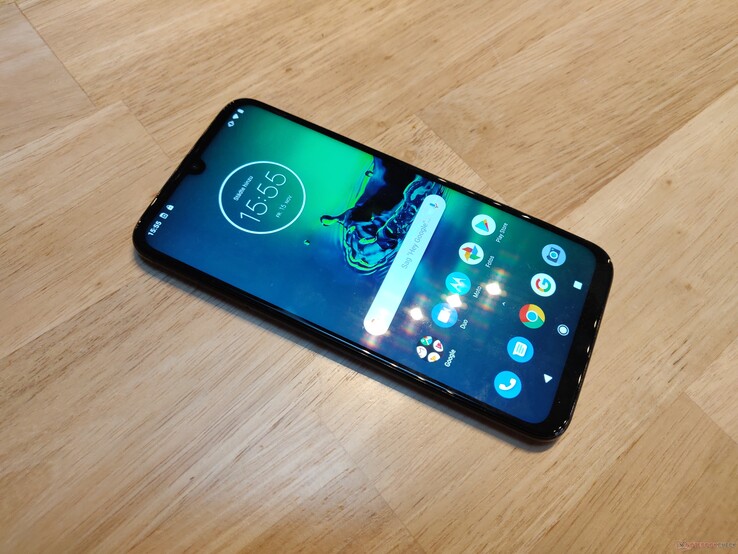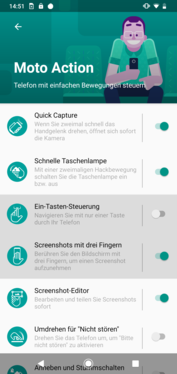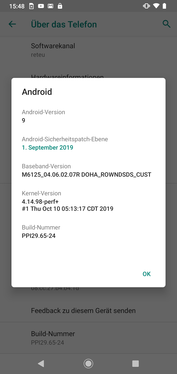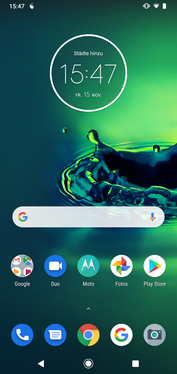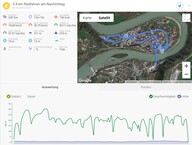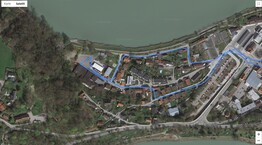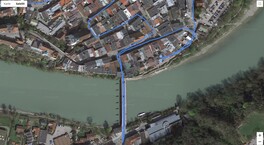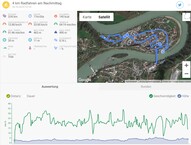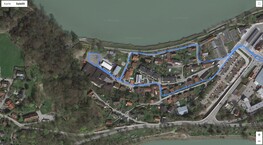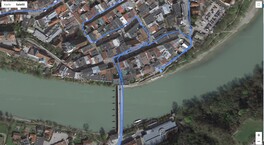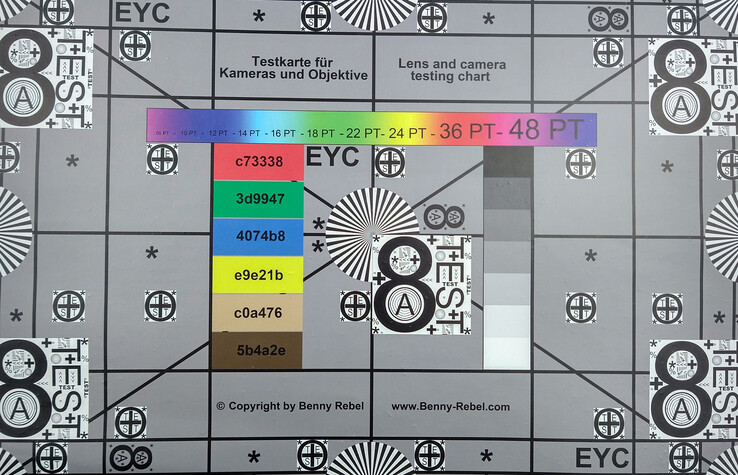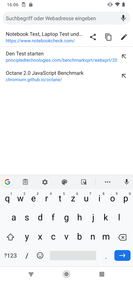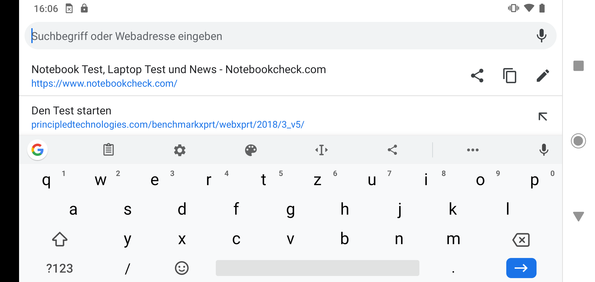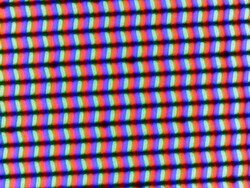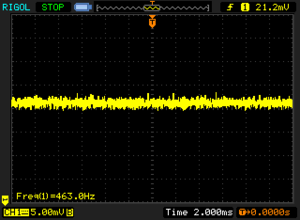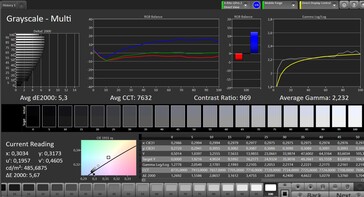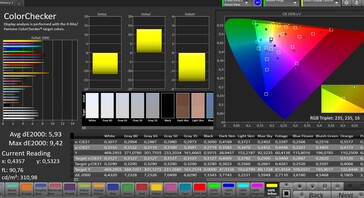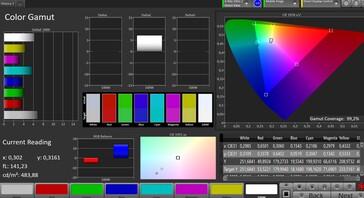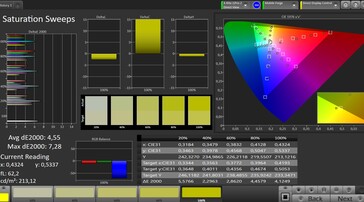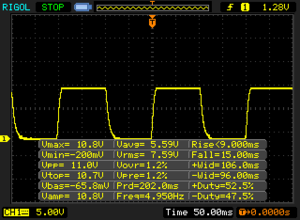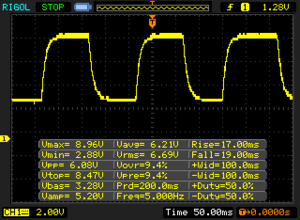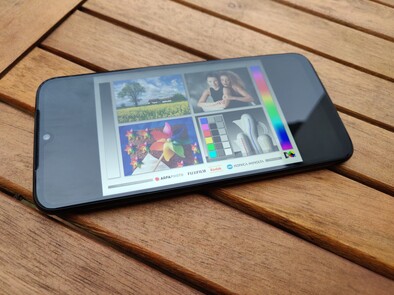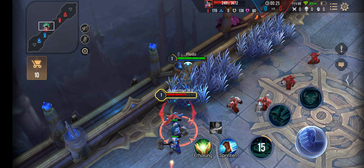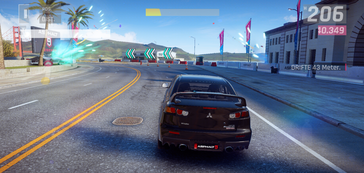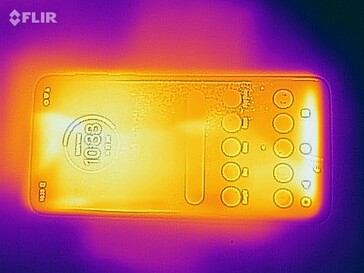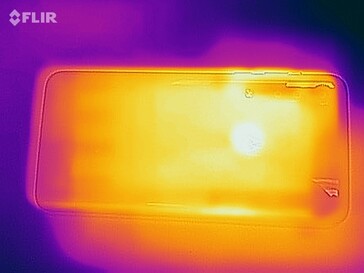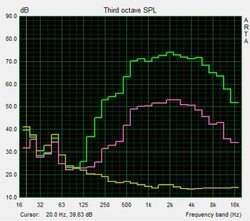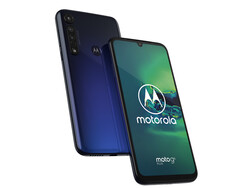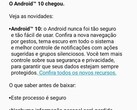Motorola Moto G8 Plus smartphone review – Mobile phone with action cam
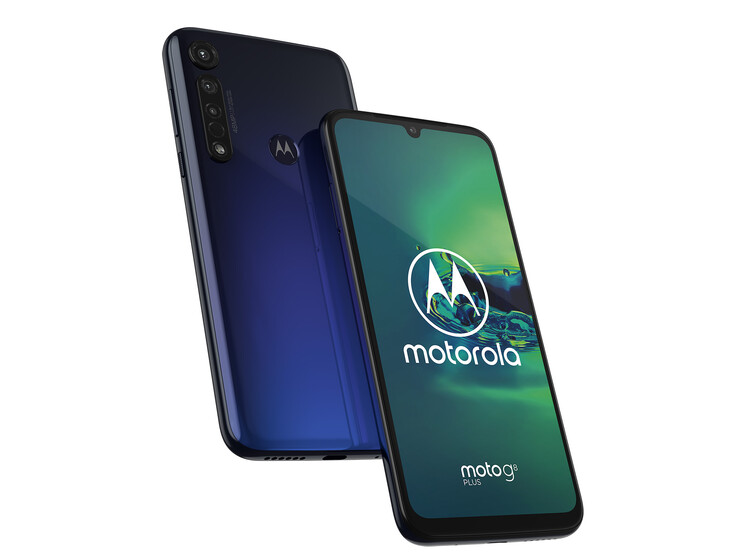
Motorola's Moto G series has been a stable force in the midrange for years: Solid, stable devices that usually offer a lot for the money. With the Moto G8 Plus, Motorola wants to continue this tradition, even if only the Plus model is available in Central Europe for the first time; with the last generation, on the other hand, there were four different models: The G7, the G7 Plus, the G7 Power, and the G7 Play.
The design is still quite modern, the battery has gotten much bigger, and the price has even dropped by 30 Euros (~$33). That sounds like a good premise. In our review, we want to identify where further differences lie with the predecessor so that we can reveal if you can expect a great price-performance ratio of Motorola's midrange segment this time again.
Comparison devices
Score | Rating Version | Date | Model | Weight | Drive | Size | Resolution | Price from |
|---|---|---|---|---|---|---|---|---|
| 78.4 % v7 (old) | v7 (old) | 11 / 2019 | Motorola Moto G8 Plus SD 665, Adreno 610 | 188 g | 64 GB eMMC Flash | 6.30" | 2280x1080 | |
| 85 % v6 (old) | v6 (old) | 02 / 2019 | Motorola Moto G7 Plus SD 636, Adreno 509 | 176 g | 64 GB eMMC Flash | 6.20" | 2270x1080 | |
| 75.7 % v7 (old) | v7 (old) | 11 / 2019 | Honor 9X Kirin 710, Mali-G51 MP4 | 197 g | 128 GB UFS 2.1 Flash | 6.59" | 2340x1080 | |
| 77.3 % v7 (old) | v7 (old) | 10 / 2019 | HTC Desire 19+ Helio P35 MT6765, PowerVR GE8320 | 170 g | 64 GB eMMC Flash | 6.20" | 1520x720 | |
| 79.1 % v7 (old) | v7 (old) | 05 / 2019 | Samsung Galaxy A40 Exynos 7904, Mali-G71 MP2 | 140 g | 64 GB eMMC Flash | 5.90" | 2340x1080 |
Case – Plastic with color gradient
The predecessor offered users a choice of unusual colors; a strong red is also available this time, or alternatively a slightly more subtle color gradient from black to dark blue. The plastic back is no longer as high-quality as with the G7 Plus, but the device is still very stable. At the front, the camera notch has become a little smaller; at 86%, the screen-to-body ratio is good but not exceptional.
What's noticeable on the back: The distinctive round camera module in the middle of the device has disappeared. Instead, the cameras are now located at the edge of the case in a row, one below the other. Visually, this doesn't add much, but Motorola is probably making room for a larger battery in this way.
The Moto G8 Plus is a medium-sized smartphone, and at 188 grams, it's not too heavy either.
Connectivity – No longer has a dedicated microSD slot
64 GB of storage and 4 GB of RAM is the usual configuration at this price level. Nothing has changed here since the last generation; the Honor 9X can score points with storage that's both faster and larger. NFC is on board as well as modern Bluetooth 5.0. As with the G7 Plus, there's a USB-C port, which internally only supports USB 2.0 speeds though. It's somewhat annoying that Motorola has taken a step backwards with the SIM slots: Although there are still two, if you insert a microSD card, you have to do without one of the SIM slots.
Positive, on the other hand: Motorola continues to hold on to the 3.5 mm port, enabling the use of headphones with an analog connection without an adapter.
Software - Will Android 10 come?
The quite pure Android hasn't been patched to version 10 yet; the security patches are from October 1, 2019 and therefore, at the time of writing this review, still somewhat up-to-date. An update to Android 10 is likely but hasn't been officially announced yet.
As is tradition, there's hardly any additional software or bloatware on Motorola's smartphones. On the other hand, the aim is to allow the Android experience to be as pure as possible.
Communication and GPS – Decent location
In terms of LTE speed and the variety of available frequencies, little has changed with the Moto G8 Plus compared to its predecessor: If you don't travel to overly exotic countries, you should get by well with the provided LTE frequencies; the maximum download speed is sufficient for this class at 400 Mb/s. In our short reception test, we measure decent values in the urban environment. Even in buildings, we usually had at least half of the signal strength.
The Wi-Fi speeds would actually be fine too, but the Wi-Fi module causes strong drops at every second measurement so that only moderately fast transfer speeds result on average; the G7 Plus was significantly faster. The full signal strength is present when standing close to the router. At a distance of 10 meters and through three walls, we still get half of the signal strength and slightly slower website loading times.
| Networking | |
| iperf3 transmit AX12 | |
| Motorola Moto G7 Plus | |
| Samsung Galaxy A40 | |
| Motorola Moto G8 Plus | |
| Honor 9X | |
| HTC Desire 19+ | |
| iperf3 receive AX12 | |
| Motorola Moto G7 Plus | |
| Samsung Galaxy A40 | |
| HTC Desire 19+ | |
| Motorola Moto G8 Plus | |
| Honor 9X | |
In our practical test with a bike we observe good location values for the Motorola Moto G8 Plus. In narrow old town streets, the location becomes less accurate than in the open field, but given the purchase price, these limitations are okay. If you don't need absolute precision, you can easily use your smartphone for navigation.
Telephone and call quality – Light buzzing noise
Google's standard app is used for telephony. Moreover, Wi-Fi calling and VoLTE can be used easily if the network provider allows it.
When making a phone call, the other person sounds very loud, which means that the environment can also listen to the conversation at high volumes. Our voice is transmitted properly as long as we speak loudly enough, but it isn't completely free of interference. The other person also sounds quite loud when using the speaker and this is accompanied by a slight buzzing noise from time to time. Users of the Moto G8 Plus should speak a little louder here too so that the voice can safely reach the person on the other end.
Cameras – The rotated action cam
Motorola has carried out its most considerable upgrade with the cameras, even though we already liked the pictures from the Motorola Moto G7 Plus very much. The additional wide-angle lens is only suitable for filming and is installed with a rotation of 90° so that you can film in portrait mode but then watch the videos in landscape mode. However, you can't take photos with it, so there's no greater flexibility or optical zoom when taking photos. The main camera has a resolution of 48 megapixels, but with the standard software, it takes photos with a maximum of 12 megapixels since four pixels are always combined. In this way, the light output per pixel is increased.
The pictures are once again pleasing due to their good detail reproduction and nice depth of field, for which there's a separate sensor again. Landscape shots also look good and with quite decent sharpness; even in low light, the sensor still manages to get some sharpness and details out, whereby we would still like to see a little more brightening.
Videos can be recorded at 4K resolution but only at a maximum of 30 fps. What's missing: The optical image stabilizer, which was available with the Moto G7 Plus. A software solution will have to hold out now.
At least on paper, the front-facing camera is also able to impress: It's now able to map up to 25 megapixels. The image sharpness could be a bit higher in practice.
We can control the lighting conditions better in the laboratory, and we take a look at the imaging performance of the main camera in the Motorola Moto G8 Plus once under perfect lighting and once at 1 lux brightness. With perfect lighting, the image sharpness is okay but not at the highest level; color areas and transitions are slightly pixelated, but overall, the image reproduction of the camera is pleasing.
Under very weak light, only bright spots on the image are clearly visible. The representation is at the level for this class here.
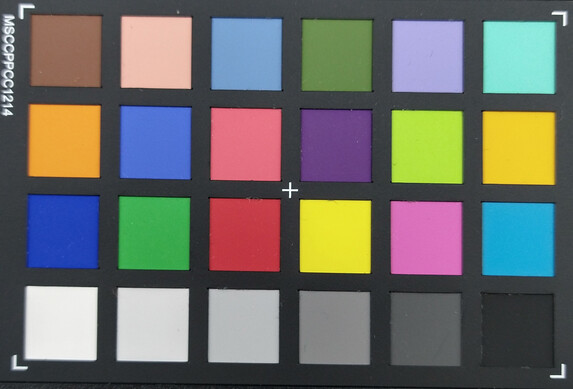
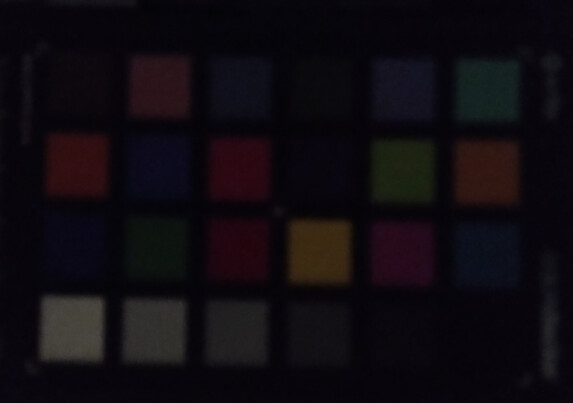
Accessories and warranty – Silicon case included
Motorola also supplies a silicon case for the smartphone along with the quick charger, a USB cable, and a SIM tool. Motorola offers a lot of smart home accessories and wireless or wired headphones on its website, but there aren't any special accessories for the Moto G8 Plus smartphone that we are reviewing here.
The manufacturer honors a 24-month warranty on its smartphone.
Input devices and handling – Fast fingerprint scanner in the Moto G8 Plus
Using the touchscreen, the smartphone can be operated in an easy, reliable and fast way, no matter where you touch the screen. Various operating gestures can be set as shortcuts via the Moto app. In this way, for example, you can have the smartphone in your hand and turn your wrist to launch the camera or tap the screen with three fingers to take a screenshot. This actually works, but it often unintentionally triggers other functions as well.
There is no notification LED, but in return, when the display is turned off, messages and a watch are displayed as soon as you lift the smartphone.
There's a fingerprint sensor at the back that unlocks the screen reliably and only with a small delay. The smartphone can also be unlocked using facial recognition.
Display – IPS display with a blue tint
The screen of the Motorola Moto G8 Plus offers 10 pixels more in length than the Moto G7 Plus, probably due to the smaller notch. The brightness has increased again; it was already at a very high level for the class with the predecessor. The brightness distribution is also more uniform so that no differences in brightness are visible to the naked eye. However, you still don't get an AMOLED screen like with the Galaxy A40. Furthermore, the black value is average at 0.52 cd/m²; black areas look rather grayish at high brightness.
| |||||||||||||||||||||||||
Brightness Distribution: 93 %
Center on Battery: 597 cd/m²
Contrast: 1148:1 (Black: 0.52 cd/m²)
ΔE ColorChecker Calman: 5.93 | ∀{0.5-29.43 Ø4.78}
ΔE Greyscale Calman: 5.3 | ∀{0.09-98 Ø5}
Gamma: 2.232
CCT: 7632 K
| Motorola Moto G8 Plus IPS, 2280x1080, 6.3" | Motorola Moto G7 Plus IPS, 2270x1080, 6.2" | Honor 9X LCD IPS, 2340x1080, 6.6" | HTC Desire 19+ IPS, 1520x720, 6.2" | Samsung Galaxy A40 Super AMOLED, 2340x1080, 5.9" | |
|---|---|---|---|---|---|
| Screen | -14% | -12% | 10% | -18% | |
| Brightness middle (cd/m²) | 597 | 537 -10% | 494 -17% | 491 -18% | 358 -40% |
| Brightness (cd/m²) | 596 | 525 -12% | 483 -19% | 470 -21% | 370 -38% |
| Brightness Distribution (%) | 93 | 85 -9% | 94 1% | 84 -10% | 94 1% |
| Black Level * (cd/m²) | 0.52 | 0.58 -12% | 0.51 2% | 0.33 37% | |
| Contrast (:1) | 1148 | 926 -19% | 969 -16% | 1488 30% | |
| Colorchecker dE 2000 * | 5.93 | 6.41 -8% | 5.74 3% | 4.34 27% | 7.4 -25% |
| Colorchecker dE 2000 max. * | 9.42 | 10.86 -15% | 10.26 -9% | 8.17 13% | 12.5 -33% |
| Greyscale dE 2000 * | 5.3 | 6.7 -26% | 7.3 -38% | 4.3 19% | 4 25% |
| Gamma | 2.232 99% | 2.099 105% | 2.086 105% | 2.302 96% | 2.084 106% |
| CCT | 7632 85% | 8310 78% | 8572 76% | 7214 90% | 7078 92% |
* ... smaller is better
Screen Flickering / PWM (Pulse-Width Modulation)
| Screen flickering / PWM detected | 463 Hz | ≤ 20 % brightness setting | |
The display backlight flickers at 463 Hz (worst case, e.g., utilizing PWM) Flickering detected at a brightness setting of 20 % and below. There should be no flickering or PWM above this brightness setting. The frequency of 463 Hz is relatively high, so most users sensitive to PWM should not notice any flickering. However, there are reports that some users are still sensitive to PWM at 500 Hz and above, so be aware. In comparison: 53 % of all tested devices do not use PWM to dim the display. If PWM was detected, an average of 8111 (minimum: 5 - maximum: 343500) Hz was measured. | |||
The contrast ratio also sits in the midfield at 1,148:1; the colors on the screen don't look either too vivid or dull. The color accuracy is passable: It's sufficient for everyday use, but users wanting to accurately assess colors will find that orange, yellow, and red shades in particular deviate too much from the reference color space. There's also a visible blue tint.
Display Response Times
| ↔ Response Time Black to White | ||
|---|---|---|
| 24 ms ... rise ↗ and fall ↘ combined | ↗ 9 ms rise | |
| ↘ 15 ms fall | ||
| The screen shows good response rates in our tests, but may be too slow for competitive gamers. In comparison, all tested devices range from 0.1 (minimum) to 240 (maximum) ms. » 53 % of all devices are better. This means that the measured response time is worse than the average of all tested devices (20.2 ms). | ||
| ↔ Response Time 50% Grey to 80% Grey | ||
| 36 ms ... rise ↗ and fall ↘ combined | ↗ 17 ms rise | |
| ↘ 19 ms fall | ||
| The screen shows slow response rates in our tests and will be unsatisfactory for gamers. In comparison, all tested devices range from 0.165 (minimum) to 636 (maximum) ms. » 49 % of all devices are better. This means that the measured response time is worse than the average of all tested devices (31.6 ms). | ||
The slightly higher brightness has a positive effect on outdoor use, but due to the strong reflections on the display, you still shouldn't use the smartphone for too long in direct sunlight since it will be exhausting for the eyes otherwise.
The viewing angles are very good thanks to IPS technology. At most, slight color shifts are visible from very flat angles.
Performance – Fast processor in the Moto smartphone
The Qualcomm Snapdragon 665 is a mid-range SoC that was first unveiled in 2019, making it a good fit for the Motorola Moto G8 Plus. In terms of performance, the smartphone is therefore at the level of its competitors. The Honor 9X offers the highest processor performance among all the smartphones in this price range.
When it comes to graphics performance, our Motorola smartphone is once again ahead of the curve. The differences are quite large compared to the Samsung Galaxy A40, for example, so that the Moto G8 Plus is the clear better recommendation for graphics-intensive apps.
| PCMark for Android | |
| Work performance score (sort by value) | |
| Motorola Moto G8 Plus | |
| Motorola Moto G7 Plus | |
| Honor 9X | |
| HTC Desire 19+ | |
| Samsung Galaxy A40 | |
| Average Qualcomm Snapdragon 665 (7437 - 9051, n=10) | |
| Work 2.0 performance score (sort by value) | |
| Motorola Moto G8 Plus | |
| Motorola Moto G7 Plus | |
| Honor 9X | |
| HTC Desire 19+ | |
| Samsung Galaxy A40 | |
| Average Qualcomm Snapdragon 665 (6189 - 11432, n=12) | |
| GFXBench 3.0 | |
| on screen Manhattan Onscreen OGL (sort by value) | |
| Motorola Moto G8 Plus | |
| Motorola Moto G7 Plus | |
| Honor 9X | |
| Samsung Galaxy A40 | |
| Average Qualcomm Snapdragon 665 (15 - 34, n=10) | |
| Average of class Smartphone (18 - 166, n=159, last 2 years) | |
| 1920x1080 1080p Manhattan Offscreen (sort by value) | |
| Motorola Moto G8 Plus | |
| Motorola Moto G7 Plus | |
| Honor 9X | |
| Samsung Galaxy A40 | |
| Average Qualcomm Snapdragon 665 (19 - 20, n=10) | |
| Average of class Smartphone (12 - 606, n=158, last 2 years) | |
| GFXBench 3.1 | |
| on screen Manhattan ES 3.1 Onscreen (sort by value) | |
| Motorola Moto G8 Plus | |
| Motorola Moto G7 Plus | |
| Honor 9X | |
| Samsung Galaxy A40 | |
| Average Qualcomm Snapdragon 665 (10 - 27, n=10) | |
| Average of class Smartphone (11 - 166, n=159, last 2 years) | |
| 1920x1080 Manhattan ES 3.1 Offscreen (sort by value) | |
| Motorola Moto G8 Plus | |
| Motorola Moto G7 Plus | |
| Honor 9X | |
| Samsung Galaxy A40 | |
| Average Qualcomm Snapdragon 665 (13 - 13, n=10) | |
| Average of class Smartphone (8.4 - 413, n=158, last 2 years) | |
The Moto G8 Plus is also at a good level when surfing the Internet; it's faster than its predecessor but not the fastest device in the price range. Websites are generally loaded quickly, but you have to wait a moment for pictures.
| Jetstream 2 - 2.0 Total Score | |
| Average of class Smartphone (23.8 - 387, n=153, last 2 years) | |
| Honor 9X (Chrome 78) | |
| Motorola Moto G8 Plus (Chrome 78) | |
| Average Qualcomm Snapdragon 665 (22.9 - 31.2, n=6) | |
| Samsung Galaxy A40 (Chrome 73) | |
| JetStream 1.1 - Total Score | |
| Motorola Moto G8 Plus (Chrome 78) | |
| Average Qualcomm Snapdragon 665 (33.4 - 51, n=8) | |
| Motorola Moto G7 Plus | |
| Samsung Galaxy A40 (Chrome 73) | |
| Speedometer 2.0 - Result 2.0 | |
| Average of class Smartphone (15.2 - 643, n=126, last 2 years) | |
| Honor 9X (Chrome 78) | |
| Motorola Moto G8 Plus (Chrome 78) | |
| Average Qualcomm Snapdragon 665 (25.4 - 30.8, n=6) | |
| Samsung Galaxy A40 (Chrome 73) | |
| WebXPRT 3 - Overall | |
| Average of class Smartphone (38 - 380, n=34, last 2 years) | |
| Motorola Moto G7 Plus | |
| Samsung Galaxy A40 (Chrome 73) | |
| Motorola Moto G8 Plus (Chrome 78) | |
| Average Qualcomm Snapdragon 665 (38 - 58, n=9) | |
| Octane V2 - Total Score | |
| Average of class Smartphone (2228 - 121337, n=201, last 2 years) | |
| Honor 9X (Chrome 78) | |
| Motorola Moto G8 Plus (Chrome 78) | |
| Average Qualcomm Snapdragon 665 (6133 - 9671, n=9) | |
| Motorola Moto G7 Plus | |
| Samsung Galaxy A40 (Chrome 73) | |
| Mozilla Kraken 1.1 - Total | |
| Samsung Galaxy A40 (Chrome 73) | |
| Average Qualcomm Snapdragon 665 (4434 - 6719, n=9) | |
| Motorola Moto G7 Plus | |
| Motorola Moto G8 Plus (Chrome 78) | |
| Honor 9X (Chrome 78) | |
| Average of class Smartphone (257 - 28190, n=156, last 2 years) | |
* ... smaller is better
Storage responds quickly for the class. The Honor 9X, on the other hand, accesses internally stored data significantly faster due to its more modern UFS 2.1 memory.
Access to our reference microSD from Toshiba, an Exceria Pro M501, isn't quite as fast as with other smartphones in the same price range.
| Motorola Moto G8 Plus | Motorola Moto G7 Plus | Honor 9X | HTC Desire 19+ | Samsung Galaxy A40 | Average 64 GB eMMC Flash | Average of class Smartphone | |
|---|---|---|---|---|---|---|---|
| AndroBench 3-5 | 2% | 62% | -6% | -14% | -13% | 487% | |
| Sequential Read 256KB (MB/s) | 302.5 | 283.6 -6% | 860 184% | 288 -5% | 295 -2% | 277 ? -8% | 2226 ? 636% |
| Sequential Write 256KB (MB/s) | 217.4 | 208.7 -4% | 196.1 -10% | 210.8 -3% | 99.6 -54% | 178.4 ? -18% | 1848 ? 750% |
| Random Read 4KB (MB/s) | 59.9 | 76.6 28% | 142.3 138% | 76.5 28% | 75.7 26% | 60.7 ? 1% | 295 ? 392% |
| Random Write 4KB (MB/s) | 124.9 | 73.1 -41% | 159.3 28% | 20.4 -84% | 13.2 -89% | 33.8 ? -73% | 335 ? 168% |
| Sequential Read 256KB SDCard (MB/s) | 72.6 ? | 82.8 ? 14% | 76.2 ? 5% | 81.8 ? 13% | 81.2 ? 12% | 77.4 ? 7% | |
| Sequential Write 256KB SDCard (MB/s) | 52.2 ? | 62.1 ? 19% | 67.1 ? 29% | 61.8 ? 18% | 65.2 ? 25% | 58.3 ? 12% |
Games – Gaming with limitations
Gaming is fundamentally possible on the Moto G8 Plus, but you have to lower your demands quite a bit: In most games you'll probably only reach 30 fps and you can't play all games at the highest details smoothly either. While the less demanding Arena of Valor still runs well, you have to adjust the settings to "Performance" on Asphalt 9 in order to really make the game enjoyable. Even then, some light stuttering is still noticeable.
Input via the positioning sensor and touchscreen works without any issues.
Emissions – Only light throttling
Temperature
With a maximum temperature of 41 °C (~106 °F), the Moto smartphone gets warm under load, but you can still hold it comfortably in your hand. In idle operation, heat development is considerably lower.
With the GFXBench Manhattan 3.1 battery test, we check whether the system can maintain its performance even under prolonged load. In fact, performance drops quite quickly and is about 5% lower than at the beginning after running the benchmark for about 10 times, which should barely be noticeable in practice.
(±) The maximum temperature on the upper side is 41 °C / 106 F, compared to the average of 35.2 °C / 95 F, ranging from 21.9 to 247 °C for the class Smartphone.
(+) The bottom heats up to a maximum of 39.7 °C / 103 F, compared to the average of 34 °C / 93 F
(±) In idle usage, the average temperature for the upper side is 33.3 °C / 92 F, compared to the device average of 32.9 °C / 91 F.
Speakers
The Motorola G8 Plus in review comes with stereo speakers featuring Dolby technology. The speakers are minimally louder than with the predecessor, but they're largely on par with each other in terms of their sound characteristics. For a midrange smartphone, the sound is still very good, but it becomes slightly treble-prone at maximum volume.
A 3.5 mm connection is available on the Moto G8 Plus; external audio devices can be connected via Bluetooth 5.0 too. aptX HD is also available for sound enhancement. The sound output is clean and lacks interference both through Bluetooth and the audio jack.
Motorola Moto G8 Plus audio analysis
(+) | speakers can play relatively loud (83 dB)
Bass 100 - 315 Hz
(-) | nearly no bass - on average 68.5% lower than median
(+) | bass is linear (0% delta to prev. frequency)
Mids 400 - 2000 Hz
(-) | nearly no mids - on average 68.5% lower than median
(+) | mids are linear (0% delta to prev. frequency)
Highs 2 - 16 kHz
(-) | nearly no highs - on average 68.5% lower than median
(+) | highs are linear (0% delta to prev. frequency)
Overall 100 - 16.000 Hz
(-) | overall sound is not linear (121% difference to median)
Compared to same class
» 90% of all tested devices in this class were better, 8% similar, 2% worse
» The best had a delta of 11%, average was 35%, worst was 134%
Compared to all devices tested
» 97% of all tested devices were better, 2% similar, 1% worse
» The best had a delta of 4%, average was 24%, worst was 134%
Motorola Moto G7 Plus audio analysis
(±) | speaker loudness is average but good (80.9 dB)
Bass 100 - 315 Hz
(-) | nearly no bass - on average 63.9% lower than median
(+) | bass is linear (0% delta to prev. frequency)
Mids 400 - 2000 Hz
(-) | nearly no mids - on average 63.9% lower than median
(+) | mids are linear (0% delta to prev. frequency)
Highs 2 - 16 kHz
(-) | nearly no highs - on average 63.9% lower than median
(+) | highs are linear (0% delta to prev. frequency)
Overall 100 - 16.000 Hz
(-) | overall sound is not linear (121% difference to median)
Compared to same class
» 90% of all tested devices in this class were better, 8% similar, 2% worse
» The best had a delta of 11%, average was 35%, worst was 134%
Compared to all devices tested
» 97% of all tested devices were better, 2% similar, 1% worse
» The best had a delta of 4%, average was 24%, worst was 134%
Battery life – The large battery does it
Energy consumption
In idle usage, the Moto G8 Plus is not as energy-efficient as its predecessor. Under load, in contrast, a few tenths of a watt can be saved. The picture is quite similar compared to other smartphones in this price range.
| Off / Standby | |
| Idle | |
| Load |
|
Key:
min: | |
| Motorola Moto G8 Plus 4000 mAh | Motorola Moto G7 Plus 3000 mAh | Honor 9X 4000 mAh | HTC Desire 19+ 3850 mAh | Samsung Galaxy A40 3100 mAh | Average Qualcomm Snapdragon 665 | Average of class Smartphone | |
|---|---|---|---|---|---|---|---|
| Power Consumption | 17% | -25% | 22% | 11% | 24% | 8% | |
| Idle Minimum * (Watt) | 1.7 | 1.1 35% | 2.3 -35% | 1.3 24% | 0.8 53% | 1.017 ? 40% | 0.848 ? 50% |
| Idle Average * (Watt) | 2.3 | 1.7 26% | 3 -30% | 2 13% | 1.4 39% | 1.893 ? 18% | 1.434 ? 38% |
| Idle Maximum * (Watt) | 3.5 | 2.1 40% | 4.2 -20% | 2.9 17% | 2.3 34% | 2.36 ? 33% | 1.618 ? 54% |
| Load Average * (Watt) | 4.7 | 5.1 -9% | 5.3 -13% | 3.6 23% | 7.4 -57% | 3.77 ? 20% | 7.01 ? -49% |
| Load Maximum * (Watt) | 7.5 | 7.9 -5% | 9.4 -25% | 5 33% | 8.6 -15% | 6.66 ? 11% | 11.3 ? -51% |
* ... smaller is better
Battery life
The Moto G8 Plus lasts 16:20 hours in our Wi-Fi test. This suggests that you can use your smartphone for two workdays, even in continuous operation, without the need for charging. The 4,000-mAh battery is significantly larger than that of the predecessor; the increase in runtime also roughly correlates to the increase in capacity, and the energy efficiency has only been improved under full load.
The 15-watt charger takes 2 hours to completely charge the smartphone.
| Motorola Moto G8 Plus 4000 mAh | Motorola Moto G7 Plus 3000 mAh | Honor 9X 4000 mAh | HTC Desire 19+ 3850 mAh | Samsung Galaxy A40 3100 mAh | |
|---|---|---|---|---|---|
| Battery runtime | -27% | -15% | -18% | -19% | |
| Reader / Idle (h) | 33.4 | 28.2 -16% | |||
| H.264 (h) | 16.6 | 13.5 -19% | 13.8 -17% | ||
| WiFi v1.3 (h) | 16.3 | 11.9 -27% | 13.9 -15% | 13.3 -18% | 10.7 -34% |
| Load (h) | 5 | 3.3 -34% | 4.6 -8% |
Pros
Cons
Verdict – Unusual but good cameras
Is the Moto G8 Plus better than the Moto G7 Plus? That is a difficult question to answer: First of all, there are many aspects that speak for the newer model, such as the longer battery life, the additional wide-angle camera or the higher performance. The lower entry price is also something to be happy about for the first time.
On closer inspection, however, you can see that some of the advantages are less meaningful in practice than in the advertising brochure: You can only use the wide-angle camera for videos. It's a great thing here that you can hold the smartphone upright but still get videos in landscape format; that makes filming with one hand easier. In return, you have to do without optical image stabilization with the Moto G8 Plus. The difference in performance isn't really decisive, and it's hardly noticeable in practice.
The fluctuating Wi-Fi speeds pose another limitation, as well as the case, which we simply liked better with the predecessor, and it looked slightly more high-quality there as well.
The Moto G8 Plus is recommendable, especially due to the high-quality camera and the long battery life.
Ultimately, which Moto G generation you find better probably comes down to the price and your own needs. The Moto G8 Plus is in any case a recommendable midrange smartphone that offers a lot of performance and equipment for its purchase price.
Motorola Moto G8 Plus
- 11/16/2019 v7 (old)
Florian Schmitt




